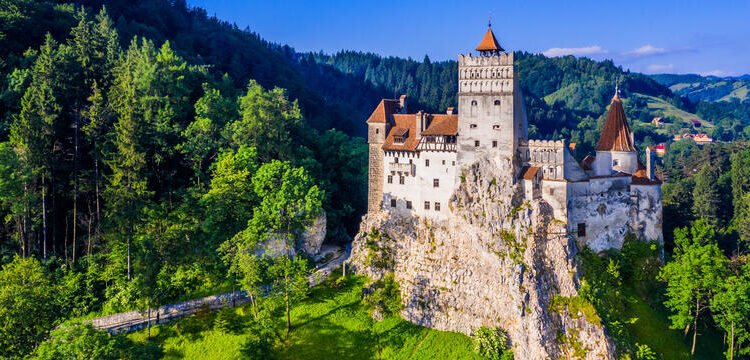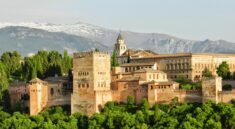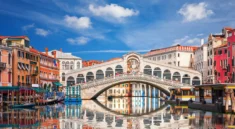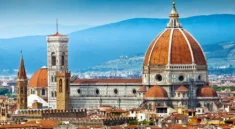
There exists a place where legend and landscape intertwine, where misty forests conceal medieval strongholds, and where cobblestone streets lead you through centuries-old towns that whisper secrets from the past. That place is Transylvania, a region in central Romania known for its medieval heritage, towering Carpathian Mountains, and, of course, the legendary Dracula’s Castle.
Though often shrouded in gothic myths, Transylvania is far more than folklore. It is a vibrant tapestry of Saxon villages, fortified churches, alpine meadows, and hauntingly beautiful fortresses. From the eerie turrets of Bran Castle, rumored to be the home of Count Dracula, to the atmospheric charm of towns like Sighișoara and Brașov, the region invites travelers to explore history, nature, and myth all in one unforgettable journey.
The Heartbeat Of History: Medieval Towns Frozen In Time
Transylvania is home to some of Europe’s most beautifully preserved medieval towns, each a portal to another era. Walled cities, clock towers, stone bastions, and pastel-colored buildings echo the days when guilds ruled trade and fortresses defended the borders from invaders.
Sighișoara: A Living Museum
Perhaps the crown jewel of Transylvania’s medieval heritage is the town of Sighișoara—a UNESCO World Heritage Site and one of the few remaining inhabited medieval citadels in Europe. Built by Saxon settlers in the 12th century, the town is a storybook vision of the past.
Wandering through Sighișoara’s cobbled lanes is like stepping into the Middle Ages. You’ll pass beneath the Clock Tower, a 14th-century structure adorned with moving figurines and golden spires. Below, artisan shops and candlelit cafes line narrow streets. The Church on the Hill, reached via a covered wooden staircase, overlooks the red-tiled rooftops and offers breathtaking views of the surrounding hills.
The town is also famous as the birthplace of Vlad the Impaler, the real-life inspiration for Dracula. His childhood home, now a modest museum and restaurant, adds a touch of chilling lore to this otherwise idyllic town.
Brașov: Where Gothic Meets Baroque
Nestled at the foot of the Tampa Mountain, Brașov is another medieval gem. The town’s historical center is anchored by the Black Church, a colossal Gothic structure with darkened stone walls from a 17th-century fire. Surrounding it are winding streets filled with Baroque and Renaissance-style buildings.
Piața Sfatului, the central square, buzzes with cafes, festivals, and street performers. The Council House, once the city’s administrative heart, now serves as a museum. The nearby Schei District, once home to the Romanian population outside the Saxon walls, features the beautiful St. Nicholas Church and the country’s first Romanian school.
Brașov’s charm lies not just in its architecture but also in its atmosphere: a mix of mountain air, medieval grandeur, and modern culture.
Sibiu: Saxon Elegance
Further west, Sibiu dazzles with its grand plazas, arched passageways, and rows of historic buildings with “eyelid windows” that appear to watch over the streets. Once a major center of Saxon trade, Sibiu exudes a refined elegance.
The Large Square (Piața Mare) and Small Square (Piața Mică) are the beating hearts of the city, home to cathedrals, palaces, and lively markets. Climb the Council Tower for panoramic views or explore the Brukenthal Palace, which houses one of Romania’s best art collections.
In winter, Sibiu hosts one of the most beautiful Christmas markets in Europe, transforming the city into a scene straight out of a fairy tale.
Nature’s Fortress: The Forested Mountains of the Carpathians
Beyond the cities, Transylvania’s natural landscape unfolds in all its rugged splendor. The Carpathian Mountains, a massive arc that embraces the region, form a haven for wildlife, ancient forests, and adventure.
The Carpathians: Untamed And Unforgettable
The Carpathians are among the least explored mountain ranges in Europe, making them a paradise for those seeking raw, unspoiled nature. Dense forests cover the slopes, where bears, lynx, wolves, and deer roam freely. In fact, Romania hosts one of the largest brown bear populations in Europe.
Hiking trails wind through Piatra Craiului National Park, where limestone ridges and wildflower meadows offer stunning vistas. The Făgăraș Mountains, also called the “Alps of Transylvania,” are home to Moldoveanu Peak, the country’s highest summit. In these ranges, glacial lakes reflect the sky, and traditional shepherd huts offer rustic hospitality.
In winter, ski resorts such as Poiana Brașov provide a scenic escape with modern amenities and alpine charm.
Forests Of Folklore
The forests of Transylvania are steeped in legend. Walk through Hoia Baciu Forest near Cluj-Napoca—sometimes called the “Bermuda Triangle of Romania”—and you’ll hear stories of strange lights, magnetic anomalies, and ghostly sightings. Whether you believe in the supernatural or not, there’s no denying the enchanting power of these woods.
Here, nature isn’t just beautiful; it’s alive with stories, many of which feed directly into the Dracula mythos.
The Myth And The Mystery: Dracula’s Castle
No journey to Transylvania would be complete without visiting Bran Castle, often referred to as “Dracula’s Castle”. Though its real connection to Vlad the Impaler is tenuous at best, the atmosphere and legends surrounding this 14th-century fortress make it one of the most compelling stops in all of Romania.
Bran Castle: Icon Of Gothic Romance
Perched dramatically on a rocky cliff, Bran Castle features narrow corridors, winding staircases, and hidden chambers that spark the imagination. Its Gothic towers and iron gates match the descriptions found in Bram Stoker’s classic novel Dracula, even though the author never visited Romania.
Inside, the castle is filled with period furniture, royal artifacts, and medieval weaponry. Exhibits cover both the myth of Dracula and the real-life Queen Marie of Romania, who once made the castle her royal residence. The view from the battlements reveals dense forests and distant peaks—a landscape that seems tailor-made for a vampire legend.
While Bran is the most famous, other castles like Corvin Castle in Hunedoara—an imposing Gothic-Renaissance fortress with towers and drawbridges—also capture the romantic spirit of the region.
Traditions, Cuisine, And Cultural Depth
Transylvania’s cultural richness goes far beyond myths and architecture. The region is a mosaic of ethnicities and traditions, shaped by Romanians, Hungarians, Saxons, and Roma communities over centuries.
Folk Traditions And Festivals
Villages in Transylvania still celebrate seasonal festivals, complete with traditional costumes, music, and dances. Ceremonies like the “Fărșang” (Saxon Carnival), Mărțișor (spring greeting), and the Harvest Festival bring communities together and preserve the soul of rural life.
Handicrafts such as wood carving, weaving, and pottery thrive in small villages like Viscri and Biertan, both known for their fortified churches and quiet charm.
Hearty Cuisine From The Heartland
Food in Transylvania is as rich and flavorful as its culture. Expect dishes like:
- Sarmale (cabbage rolls stuffed with meat and rice)
- Ciorbă de burtă (sour tripe soup with garlic and cream)
- Mămăligă (cornmeal porridge similar to polenta)
- Papanași (fried cheese doughnuts topped with sour cream and jam)
Meat lovers will enjoy grilled sausages and stews, while vegetarians can savor fresh cheeses, wild mushrooms, and seasonal vegetables. Don’t forget to try local wines and plum brandy (țuică)—a staple at any Transylvanian table.
A Region Unlike Any Other
Transylvania captivates because it is layered with meaning. Each town, forest, and castle tells part of a larger story—a story of endurance, legend, and beauty. It’s not merely a destination for Dracula fans or medieval history buffs; it’s a journey into the soul of a region that has stood the test of time.
From the heights of the Carpathians to the silence of a fog-draped fortress, from the vibrant markets of Sibiu to the ghostly allure of Bran Castle, Transylvania is a place that stays with you long after you leave.




